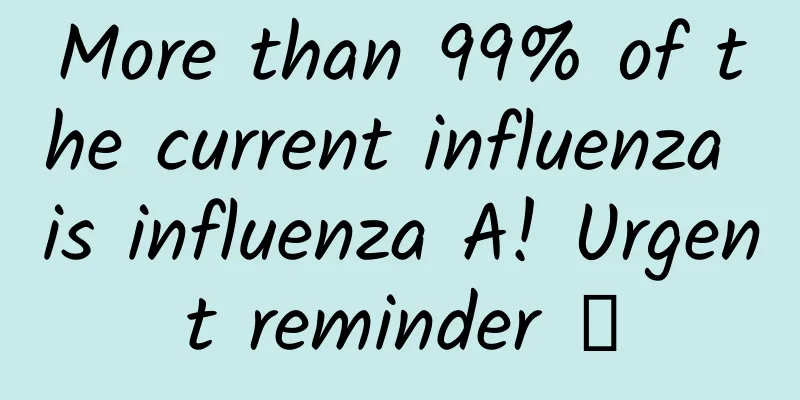[Health Science] Do you know the dangers of sleep apnea?
![[Health Science] Do you know the dangers of sleep apnea?](/upload/images/67f19f326ebe7.webp)
|
Sleep apnea is a common sleep disorder that poses many risks to the patient's health and quality of life. By affecting breathing patterns, sleep apnea causes hypoxia, hypercapnia, and decreased sleep quality, leading to a series of serious problems. In this popular science article, we will explore the dangers of sleep apnea in depth to increase everyone's understanding of this disease and remind people of the importance of early diagnosis and treatment. 1. What is sleep apnea? What are its symptoms? Sleep apnea, also known as sleep apnea or obstructive sleep apnea, is a sleep disorder characterized by multiple pauses in breathing or shallow breathing during sleep. These pauses can lead to reduced oxygen supply and accumulation of carbon dioxide, affecting sleep quality and normal physiological function. Common symptoms of sleep apnea include: (1) Nocturnal snoring: Most patients snore frequently and loudly during sleep. (2) Apnea: Patients experience multiple apneas during sleep, that is, brief cessation of breathing, with the pause time generally ranging from a few seconds to a minute. (3) Sudden awakening: Due to insufficient oxygen supply caused by apnea, patients may suddenly wake up during sleep, accompanied by suffocation, a feeling of suffocation, or difficulty breathing. (4) Insomnia: Sleep quality decreases, it is easy to wake up at night and it is difficult to fall asleep again. (5) Daytime sleepiness: Due to poor sleep quality at night, most patients feel tired and drowsy during the day. (6) Organic fatigue: Long-term disease course can cause persistent fatigue and affect normal daily activities.
2. What are the causes of sleep apnea? 1. Obstructive sleep apnea: This is the most common type and is usually caused by an obstruction in the upper airway, such as enlarged tonsils, relaxed muscles at the base of the tongue, nasal polyps, etc. 2. Central sleep apnea: This type is caused by abnormalities in the central nervous system, such as abnormalities in the brainstem, diseases or injuries of the central nervous system, etc. 3. Mixed sleep apnea: a condition in which upper airway obstruction and central nervous system abnormalities exist simultaneously. Other factors that may cause sleep apnea include: 1. Obesity: Obesity increases the risk of upper airway obstruction, leading to breathing difficulties. 2. Diet and lifestyle habits: such as excessive drinking, smoking, improper sleeping posture, etc. 3. Genetic factors: Some people may have familial sleep apnea. 4. Drug or substance abuse: The use of certain drugs or substances can affect the function of the respiratory center. 5. Pathological conditions: such as hypothyroidism, cardiovascular disease, chronic obstructive pulmonary disease, etc. The picture comes from the Internet 3. What are the dangers of sleep apnea? 1. Hypoxia and hypercapnia Hypoxia and hypercapnia are one of the main hazards caused by sleep apnea. When apnea occurs, the patient stops breathing and cannot take in enough oxygen normally. At the same time, the carbon dioxide in the body cannot be discharged, resulting in hypoxia and hypercapnia. Hypoxia refers to insufficient oxygen supply, which results in the inability of various tissues and organs of the body to obtain sufficient oxygen. Long-term hypoxia can have serious effects on various systems of the body. Hypoxia can increase the burden on the heart, causing cardiovascular diseases such as heart muscle damage, arrhythmia, and coronary heart disease. Hypoxia can also cause vasoconstriction, increasing the risk of high blood pressure. In addition, brain cells are sensitive to oxygen, and hypoxia can cause impaired brain function. Long-term hypoxia may cause cognitive dysfunction, memory loss, lack of concentration, and even increase the risk of stroke. Hypoxia weakens the function of the immune system, reduces the body's resistance to diseases and pathogens, and increases the risk of infection. Hypercapnia refers to excessive levels of carbon dioxide in the body. It can cause a decrease in breathing rate and depth, further aggravating hypoxia. Hypercapnia can cause symptoms such as headache, drowsiness, and confusion, affecting perception and cognitive ability. In addition, hypercapnia can cause impaired cardiovascular function, including reduced myocardial contractility, arrhythmia, and increased blood pressure. Finally, hypercapnia can affect the regulation of the respiratory center, making breathing more difficult and potentially causing the patient to feel suffocated or have difficulty breathing. The picture comes from the Internet 2. Cardiovascular disease The second hazard of sleep apnea is problems related to the cardiovascular system. Sympathetic nerve excitement and hypoxia caused by sleep apnea can have a negative impact on the cardiovascular system and increase the risk of cardiovascular disease. There is a close connection between sleep apnea and hypertension. When apnea occurs, oxygen supply is reduced, blood oxygen levels drop, sympathetic nerve excitement causes, and blood pressure rises. Long-term sleep apnea can lead to persistent hypertension and increase the risk of cardiovascular disease. In addition, sleep apnea can cause arrhythmias, such as arrhythmia and bradycardia. This is due to abnormal cardiac autonomic function caused by hypoxia and sympathetic nerve excitement. In addition to the above two points, long-term sleep apnea increases the risk of coronary heart disease and myocardial infarction. Sympathetic nerve excitement and blood distribution disturbance caused by apnea may lead to coronary artery spasm, thrombosis, etc., which in turn cause myocardial ischemia and myocardial infarction. Finally, sleep apnea is closely related to heart failure. Repeated apnea events can increase the heart load, impair heart function, and eventually develop into heart failure. The occurrence and long-term existence of these cardiovascular problems will increase the risk of cardiovascular disease in patients and seriously affect the quality of life. Therefore, early diagnosis and effective treatment are very important for patients with sleep apnea. Early treatment and management of sleep apnea can help reduce the risk of cardiovascular disease and improve the patient's cardiovascular health. Be sure to consult a professional doctor to get a personalized treatment plan. The picture comes from the Internet 3. Sleep disorders and daytime fatigue The third hazard of sleep apnea is the impact on sleep quality and daytime fatigue. Due to repeated awakenings at night and disruption of sleep structure caused by apnea events, patients may wake up many times at night, resulting in decreased sleep quality. This can have an adverse effect on patients' daytime performance and quality of life. Sleep apnea can cause multiple awakenings at night, due to repeated apnea and insufficient oxygen supply in patients. These night awakenings interrupt the continuity of sleep and lead to decreased sleep quality. In addition, sleep apnea may cause insomnia problems, and patients may have difficulty falling asleep or maintaining sleep, and are prone to waking up at night. This further disrupts sleep quality. Finally, the decreased sleep quality at night of sleep apnea can lead to daytime fatigue and drowsiness. Patients may feel lack of energy and difficulty concentrating, affecting their performance in work, study, and daily activities. Insufficient sleep and daytime fatigue can have a negative impact on mood, and patients may be irritable, anxious, and have mood swings. This can affect communication with others and emotional state in daily life. Decreased sleep quality and daytime fatigue not only affect personal physical and mental health, but may also increase the risk of accidents, such as traffic accidents and work accidents. Therefore, it is very important to diagnose and treat sleep apnea early to improve sleep quality, reduce daytime fatigue, and enhance the patient's quality of life. Professional doctors can develop personalized treatment plans based on the specific situation of each patient to help them improve sleep and restore normal daytime status. In addition, patients with sleep apnea may have problems with cognition and thinking. Long-term hypoxia and poor sleep quality can lead to decreased cognitive function, affecting learning, attention, concentration, and the ability to process information. The picture comes from the Internet Sleep apnea has a significant impact on people's health and lives. From hypoxia and hypercapnia to cardiovascular problems, decreased sleep quality, impaired cognitive function and mental health, these hazards cannot be ignored. However, we should also realize that early diagnosis and treatment can effectively reduce these hazards and improve the quality of life of patients. Through scientific treatment and reasonable lifestyle adjustments, we can help patients get rid of the troubles of sleep apnea and protect their health. Therefore, we call on everyone to pay attention to and attach importance to sleep apnea, and take active measures to prevent, diagnose and treat this disease, laying a solid foundation for a healthy future. |
<<: Prevention of cerebrovascular disease starts with ultrasonography of brain and neck vessels
Recommend
Will the cervix close after separation?
The pregnancy conditions of every expectant mothe...
Why is it easy to get pregnant after angiography?
Hysterosalpingography is mainly used to detect th...
What is the cause of left lower abdominal pain in early pregnancy
People who are pregnant in the early stages somet...
Yujian Science Popularization丨Understand hepatitis, love and protect the liver. Vaccination against hepatitis A can effectively prevent hepatitis A
Dahe.com News: Summer is here, and it is the seas...
Will scanty menstruation affect pregnancy?
Women normally have their periods every month, an...
Can pregnant women eat fragrant pears?
Fragrant pear is a very delicious food, but pregn...
Is it dangerous to have a second baby by vertical caesarean section?
Generally, women choose transverse incision when ...
How to distinguish endometrium from blood clot
The endometrium is a tissue structure inside the ...
After the age of 50, the incidence of osteoporosis in women is more than 5 times that in men! Check if you are a "high-risk group" in one minute
Today (October 20) is the 27th World Osteoporosis...
Can I use a pregnancy test 13 days after sex?
For families hoping to have a baby, it is a very ...
How to do breast augmentation at Tianzong acupoint
In cosmetic medical institutions, there are vario...
Are eggs released during the day or at night?
Oocytes are important reproductive cells in women...
The shape of a woman's genitals
In our lives, many men have some misunderstanding...
How long does it take to delay my period after taking Yuting?
Yuting, I don't know if many people are famil...
What causes women's knee weakness?
The knee joint is a relatively critical position ...









